If you’re a marketing or communications professional, you will be well versed in the concept of content marketing. Social media has literally spread it everywhere and quite rightly too. First and foremost, your brand needs to educate and add value to its intended audience by delivering credible, relevant and new content. It is only then, when you have generated enough interest, that a relationship will be considered.
This of course isn’t a new concept. Content marketing is a way for businesses to stand out and engage consumers in a very full and competitive pond, technological advancements have just enabled content to be delivered more effectively. And this is no different for internal content as employers struggle to retain and engage talent, whilst employees demand to be treated more like consumers (there’s an on-demand webinar that’s well worth a watch on this subject).
Whether producing external content to businesses or consumers, or speaking to an internal audience, content needs to be engaging and credible. The best way to do this is to consult the experts. Internally of course, that’s your employees. Communications are much better received when delivered by peers as a trusted source.
We are seeing more and more customers encourage user-generated content, in fact recent research amongst our cloud customers shows that 31.1% of content is user-generated (outside from official content authors). There are a few that have been leading the way. Dupaco, for example, has a homepage that is 100% user-generated!
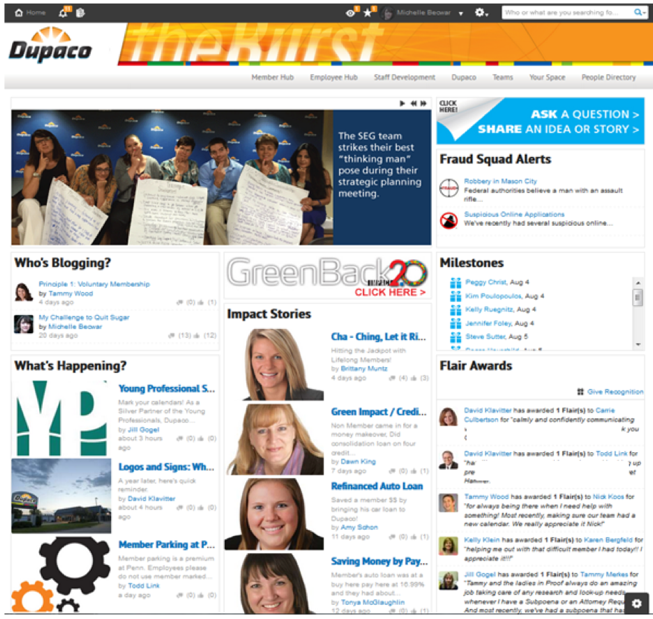
The thing is, of course, not everyone is a communications expert! And this may be putting some people off contributing. Our customer research reveals when a blog is liked, authors are 45% more likely to post again. When a blog post receives comments, authors are 80% more like to post again.
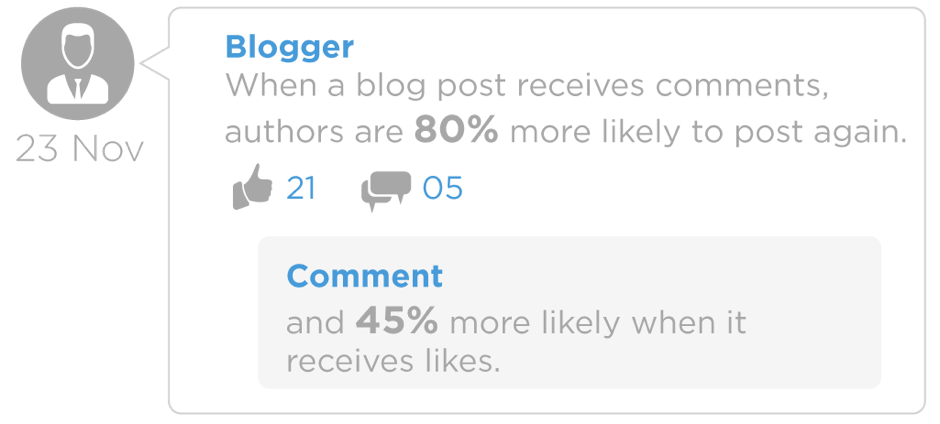
This means the author experience needs to be a good one and that there needs to be enough of a culture of psychological safety in the workplace so that people feel safe contributing. There are going to be elements relevant to your business only, according to your brand guidelines and industry requirements, but to help get you started here’s some tips that will help give your employees some confidence to get creating:
1) Who are you talking to?
So, let’s start at the beginning. Before writing anything, you need to understand your audience. Ultimately who are you writing the piece for? Are you producing content for the whole company or is it for a specific segment; your team, the board or even an individual? Creating personas will help you develop specific pieces of content that are relevant and engaging, and therefore engage your intended audience.
Consider the demographics of your readers. Where they are based? Perhaps they are remote workers who need quick and easy access to information on the move or colleagues in completely different time zones. How technology enabled are they? What are their levels of engagement at this point? What do they know already and how much information do they do need (I mean really need) ? Remember that different audiences require different amounts of information. Senior managers often prefer a high level overview, whereas a colleague in customer services will require more information. This can make it tricky when talking to everyone, but I will cover that in structuring your content below.
2) What’s the story?
This may sound so obvious, but before you go off and put fingers to keys, have you thought about what you’re trying to achieve by sharing your content? Is there a need or want for this information? Or is it content you want users to read, but no one really cares about? Now that doesn’t mean they won’t be interested in it once they start reading, but you need to encourage readers to get there by creating the need and want.
The best way? Ask them! A great tool for this is running a quick poll on your intranet that sits on the homepage. You could also check your intranet analytics to see what people are searching for and identify any content gaps. Using this information to approach experts within the business is a good way to encourage users to blog; people love nothing more than receiving expert status! The content will be engaging as you’re giving users a subject they feel comfortable with and the need has already been identified, so readers are more likely to like and comment.
Richard Millington is a guru of building Communities. He shared great tips as to how to encourage people to join in when he spoke at Interaction, which I covered in my summary of the event.
3) How do you structure your content?
As discussed earlier, when speaking to a large audience who all digest content in different ways, you need to give them a chance to decide whether to take it all in, or just the headline facts. Now that’s not free reign to tell everyone everything!
Think of your content in food form (it always works for me). Give readers a bite, a snack and then the meal. A lot of people make the mistake of heading straight to the meal, which often switches people off and means great content is missed and authors are left feeling disheartened.
The bite is the headline, the snack is the summary and the meal is the story. The story still needs to be broken into sub-sections so it’s more digestible, using sub-headings as mini bites – this is where top tips come in handy!
4) How do you create a winning headline?
The headline is tricky to master, and it is the hook that reels in your readers. Our blog titles tend to follow the formula; number + adjective + promise. The number makes your content more digestible, the adjective explains exactly what people will find and the promise reveals how it’s going to be of use.
This is not an exclusive formula and there are some great tools out there to help if you need some inspiration. Hubspot’s Blog Topic Generator is a particular favourite of mine:
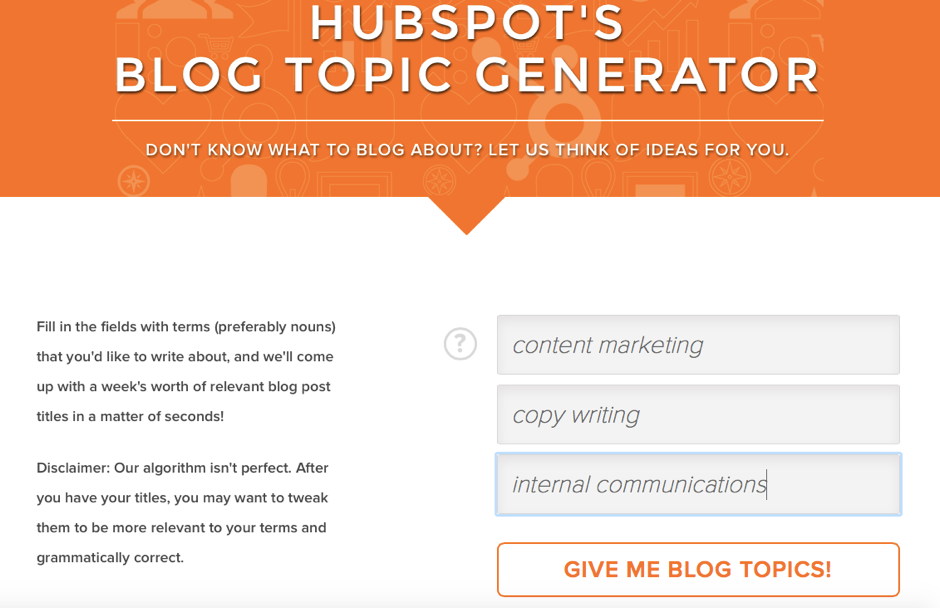
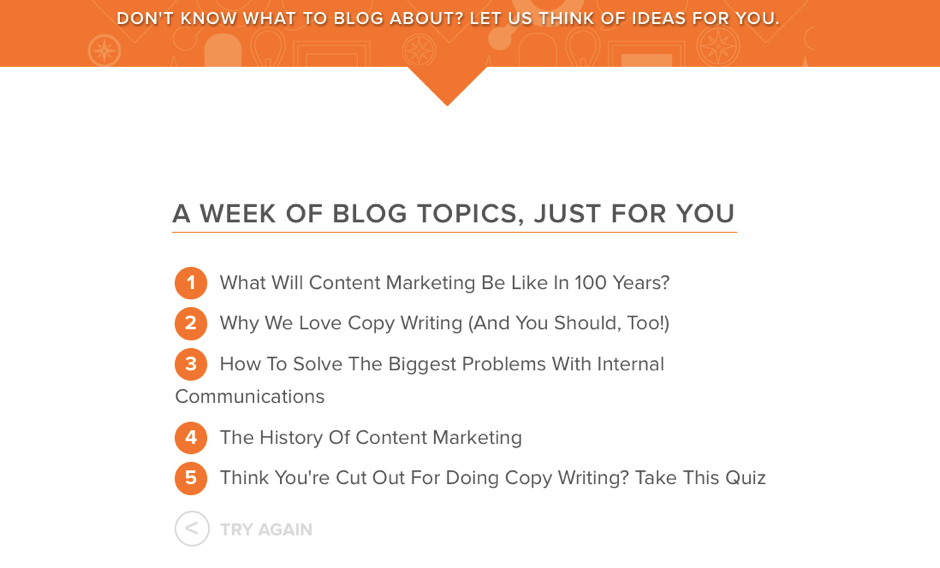
Once you’ve got your headline, there are tools to test how effective they are. I hear what you’re saying, you could do this forever. But CoSchedule’s Headline Analyzer is brilliant!
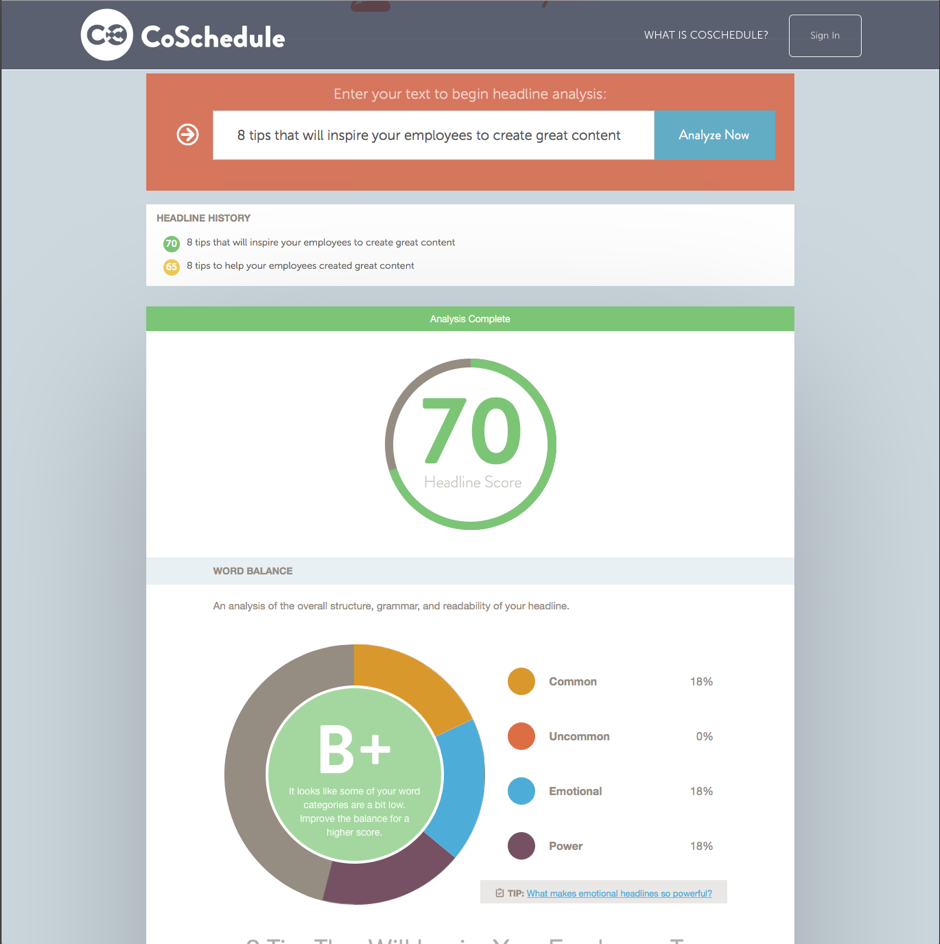
5) Keep your content simple
Every organisation has its jargon, but that doesn’t mean everyone understands it. The best rule is to avoid jargon at all costs. It’s also good practice to keep language simple – there’s nothing more disengaging than using superfluous lexes!
Possibly deemed a bit old school, but a test I still live by since my days as a journalism student, is the Flesch formula (the above is not going to do my score any good).
It’s really simple (and even more so as Word does it for you if you amend your settings – Google will help you with that bit). The Flesch reading ease test will rate content on a 100-point scale. The higher the score, the easier it is to understand (60-70 is good place to aim for).
Of course I had to test this blog… 62.9 (phew)!
6) Make your content visual
To make your piece of content truly engaging, include as many images, infographics and videos you can. It helps portray the message in different ways, so information is more likely to be retained.
And the best thing is, you can create the images yourself, even if you’re as graphically challenged as I am. My favourite tool is Canva – it’s so quick and easy to use, and best of all free (although there are paid options of course). I knocked this one up in about 7 minutes, and whilst our Designer Zack needn’t worry about his job security, it’s not too shabby!

7) Make your content personal
People love human stories! It’s a great place to start; it builds your confidence as you get used to sharing news, it engages users and encourages people to interact through likes and comments. You could share charity work, team nights out or even what you got up to at the weekend. Photos are always a good addition to a piece of content (even when it’s this lot)…

8) Get advice from the content experts
There is a pool of resources and groups out there to help and some fantastic ones. I can’t recommend The Content Strategist from Contently enough – the posts are fun, easy to read and full of great tips.

There’s lots of groups on LinkedIn that you can ask to join, where people are really free with advice and sharing of experiences – you could try Content Marketing Group and Content Marketing Institute. In terms of knowledge sharing amongst internal communications experts, The IC Crowd is a good one to follow on Twitter.
There is loads more to share, but in the interests of blog length best practice, this is a good place to help you get started.
